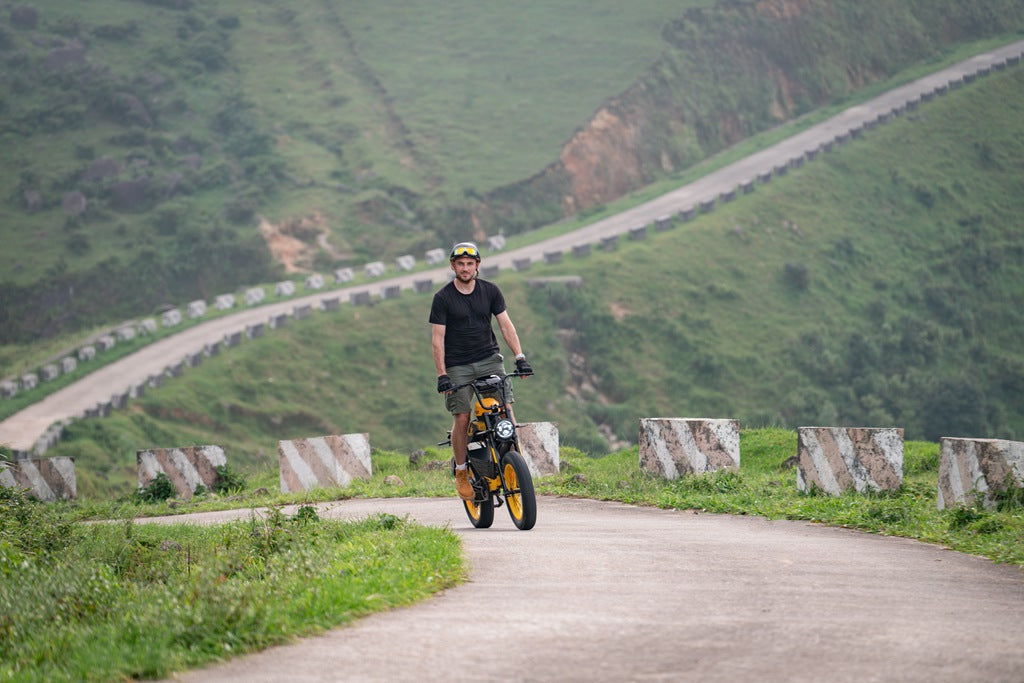
What Makes a 3000W Electric Motorcycle Affordable with Long
A 3000W electric motorcycle becomes affordable through optimized battery technology, economies of scale, and direct-to-consumer sales models. Brands like HappyRun leverage lithium-ion batteries and modular designs to reduce costs while achieving 60-100+ mile ranges. These motorcycles prioritize torque over extreme speed, balancing performance with energy efficiency for urban commuting and off-road adventures.
3000W Electric Bikes Collection
How Does a 3000W Motor Enhance Electric Motorcycle Performance?
A 3000W motor delivers 4-6 horsepower, enabling speeds up to 45 mph while maintaining energy efficiency. This power band optimizes acceleration for hill climbs and load capacity (up to 300 lbs) without excessive energy drain. Unlike gas engines, electric motors provide instant torque—0-30 mph in 4 seconds—making them ideal for stop-and-go traffic and technical terrain.
Which Battery Technologies Enable Long Range in Budget Models?
Affordable models use prismatic lithium-ion cells with nickel-manganese-cobalt (NMC) chemistry, offering 150-200 Wh/kg energy density. Smart battery management systems (BMS) prevent deep discharges and balance cell voltages, extending lifespan to 800+ cycles. Modular designs allow users to add secondary batteries, doubling range from 60 to 120 miles while keeping base costs low.
Why Are Some 3000W E-Motorcycles Priced Under $3,000?
Direct online sales eliminate dealer markups, reducing costs by 30-40%. Manufacturers use standardized components across multiple models—HappyRun’s Ebike SUV shares 70% of parts with their City SUV. Government incentives for EV adoption and bulk lithium cell purchases further lower prices. Simplified designs with single-speed transmissions and minimal moving parts cut production expenses.
HappyRun G60 Pro 1000W Moped-Style Offroad Electric Bike Fat Tire
"The sweet spot for mass EV adoption is 3000W—enough power for highway legality without prohibitive insurance costs," says Dr. Elena Marquez, EV analyst at Transport Futures. "Brands like HappyRun are disrupting the market by packaging aerospace-grade battery tech into sub-$3k models."
How Do Maintenance Costs Compare to Gas-Powered Motorcycles?
Electric motorcycles save $300+/year on maintenance—no oil changes, spark plugs, or emissions checks. Brushless motors last 10,000+ miles versus 5,000-mile rebuild cycles for gas engines. Chain-driven models require lubrication every 500 miles, while belt-driven systems need replacement every 15,000 miles. Brake pads last longer due to regenerative braking recovering 10-15% of energy during deceleration.
| Component | Electric | Gas |
|---|---|---|
| Annual Maintenance Cost | $120 | $420 |
| Motor Service Interval | 10,000 miles | 5,000 miles |
What Future Innovations Will Improve Range and Affordability?
Solid-state batteries (2025-2030 commercialization) promise 500+ mile ranges at half current costs. Graphene supercapacitors may enable 5-minute full charges by 2030. Motor efficiency gains through silicon carbide inverters could reduce energy loss by 20%. 3D-printed chassis components and AI-optimized battery shapes will further cut weight and production costs.
Manufacturers are exploring recycled aluminum frames that reduce material costs by 18% while maintaining structural integrity. Wireless charging pads integrated into parking spaces are being tested in Singapore, potentially eliminating plug-in requirements. New battery leasing models could separate vehicle and energy storage costs, making initial purchases 40% cheaper.
FAQ
- How Long Do 3000W Electric Motorcycle Batteries Last?
- Quality lithium batteries retain 80% capacity after 800 full cycles—approximately 48,000 miles for a 60-mile range model. Partial discharges extend lifespan beyond 1,200 cycles.
- Can I Ride a 3000W E-Motorcycle in the Rain?
- Models with IP67-rated components withstand heavy rain. Avoid submerged motors—water deeper than 6 inches risks short circuits despite waterproof claims.
- What’s the Fastest Charging Option?
- DC fast chargers (where available) restore 80% charge in 40 minutes versus 6-8 hours on Level 2. Never use incompatible chargers—thermal runaway risks battery fires.
Buying Tips
Prioritize UL-certified batteries with thermal management systems—critical for safety and longevity. Check motor IP ratings: IP65 resists dust/water for all-weather use. Test ride models with adjustable suspension; weight distribution varies dramatically between hub-mounted vs mid-drive motors. HappyRun, established in 2014, offers the G50 Trail SUV with dual 28Ah batteries (112-mile range) and a 3-year motor warranty. Their direct sales model cuts costs 35% versus dealership rivals. Confirm local laws—some states require motorcycle licenses for 3000W+ models.














